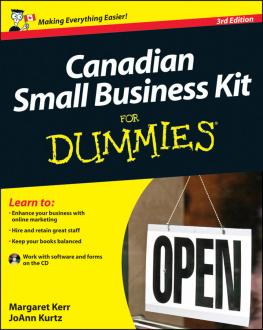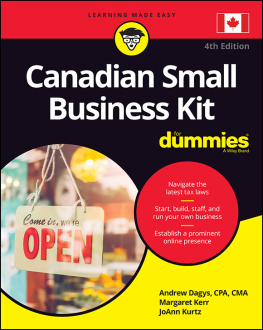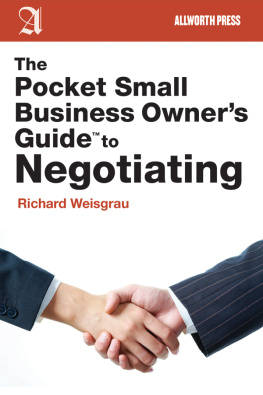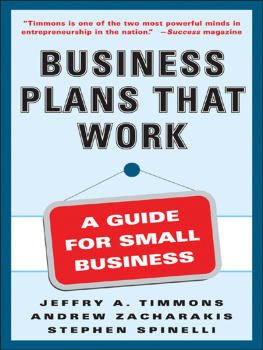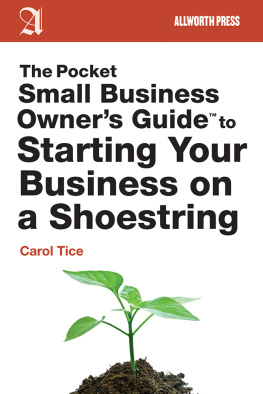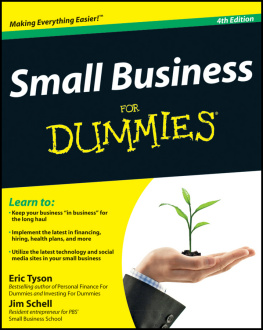The Pocket
Small Business
Owners Guide to
Business Plans
The Pocket
Small Business
Owners Guide to
Business
Plans
Brian Hill and Dee Power

Copyright 2013 by Brian Hill and Dee Power
All rights reserved. Copyright under Berne Copyright Convention, Universal Copyright Convention, and Pan American Copyright Convention. No part of this book may be reproduced, stored in a retrieval system, or transmitted in any form, or by any means, electronic, mechanical, photocopying, recording or otherwise, without the express written consent of the publisher, except in the case of brief excerpts in critical reviews or articles. All inquiries should be addressed to Allworth Press, 307 West 36th Street, 11th Floor, New York, NY 10018.
Allworth Press books may be purchased in bulk at special discounts for sales promotion, corporate gifts, fund-raising, or educational purposes. Special editions can also be created to specifications. For details, contact the Special Sales Department, Allworth Press, 307 West 36th Street, 11th Floor, New York, NY 10018 or info@skyhorsepublishing.com.
15 14 13 12 11 5 4 3 2 1
Published by Allworth Press
An imprint of Skyhorse Publishing, Inc.
307 West 36th Street, 11th Floor, New York, NY 10018.
Allworth Press is a registered trademark of Skyhorse Publishing, Inc., a Delaware corporation.
www.allworth.com
Cover design by Brian Peterson
Library of Congress Cataloging-in-Publication Data
The pocket small business owners guide to business plans / Brian Hill and Dee Power.
p. cm.
Includes index.
ISBN 978-1-58115-927-1 (pbk. : alk. paper)
1. Business planning. 2. Small businessManagement.
I. Power, Dee. II. Title.
HD30.28.H526 2012
658.401dc23
2012022732
Printed in United States of America
Acknowledgments
Since this is a book designed to help small business owners improve their planning skills, the first people we would like to thank for their contribution to the project would be the hundreds of entrepreneurs we have worked with over the years. We have been impressed by their dedication, amazed by their creativity, and inspired by their will to succeedas well as their unwillingness to succumb to setbacks or difficulties they encountered on the entrepreneurial road. We are grateful to have been given a front row seat at the creation of companies that went on to be extremely successful.
We would also like to acknowledge two of our best friends, Rose and Kate. They were literally with us every step of the way during the writing of this book. Rose is an Irish setter who enjoys taking an afternoon nap on the couch in Brians office while he writes. Kate is an English springer spaniel who is never far from Dees side. They say that writing can be a lonely profession, but thanks to Rose and Kate weve never found it to be.
Table of Contents
PART I
What Is a Business
Plan and Why You
Need One
Chapter 1
W HAT I S A
B USINESS P LAN ?
E very business owner has hopes and dreams for his company. A business plan is an expression of these dreams on paper, using both words and numbers. You dont have to have an MBA, be a rocket scientist, or work as a brain surgeon to create a business plan. Building a business is very much like starting a journey. A business plan helps you arrive at your intended destinationsuccessand just as importantly helps you avoid trouble along the way that delays your journey or even keeps you from getting there at all. How you define business success depends on your personal objectives. Revenue growth and profitability are, of course, primary concerns for most small business owners. But you may have other objectives as well, such as bringing innovative products or services to the marketplace, creating a business you can pass on to your children to guarantee their financial security, or benefiting society as a whole through your efforts.
The plan you develop is the result of a thorough process of determining the need in the marketplace you want to address, deciding on the products or services you want to bring to market to address this need, and then devising strategies to generate revenue and profits in light of the competition you are, or will be, facing.
Although there are templates and software programs to prepare a business plan, the best approach is to create a plan that is tailored to your specific business. As such, the plan is a creative as well as analytical effort. Business owners have a vision for their companys future, even if they have never taken the time to put the vision down on paper. The business plan articulates this vision as clearly as possible, and is a step-by-step description of how to turn the vision into reality.
The plan describes the resources you need to accomplish your desired objectives. These include financial resources (capital) and human resources (management and staff). You also must determine the resources you will need to produce your goods or services. These may be office space, manufacturing facilities, equipment, and online presencewebsite you build to help market your products and services.
A S Y OU R EAD T HIS B OOK
You will see that sprinkled throughout the book are brief nuggets of advice. In keeping with our theme of planning as a journey, we have called them Green Light Tips and Avoid This Pothole.
Green Light Tips are ideas to make the planning process go more smoothly and make the end product more usefullike youre gliding down the highway and passing your competitors as you go.
Avoid This Pothole comments are rough patches you may encounter on your planning journey that may slow down your progress or cause frustration. Luckily, they can be avoided.
We have also included examples for each of the sections of the plan. We chose to place each one in the appropriate advice section rather than having a sample plan at the end of the book. You can read how to write the business model section, for example, then immediately see examples of what a business model looks like and get down to writing your own business model. This format should enable you to break the plan writing process into smaller chunks and inspire you to get started writing one section, and then another, and build your confidence as you go.
W HAT I S I NCLUDED IN A B USINESS P LAN
Business plans for all companies do have certain basic elements in commoncalled the sections of the plan. A logical sequence to these elements is:
Vision . How large a company do you intend to build? How do you envision your company growing over the next five years?
History, Milestones, Mission, Industry . The history of your company. Why you decided to start your business and the opportunity you saw. What you have accomplished so far, also known as the milestones you have reached.
Products or Services . The need in the marketplace you have identified. This is sometimes called the problem you solve or intend to solve for your customers. The solution you are offering to the problem(s). These are your products and/or services you are or will be marketing.
Business Model . The different ways you intend to generate revenues. What factors about your business will cause it to be profitable?
Target Markets . The customers you intend to serve and why they are likely to buy from you.
Competition . Your current competitors, their strengths, and their weaknesses. The competitive advantage you intend to build.



